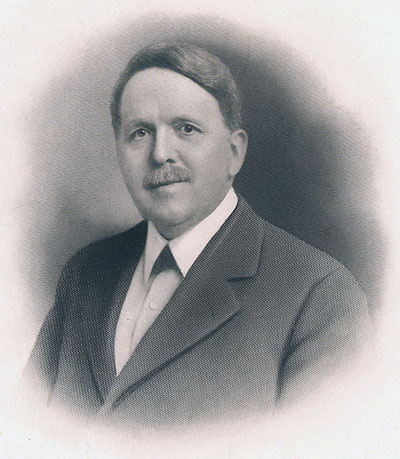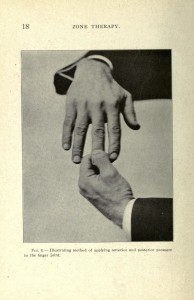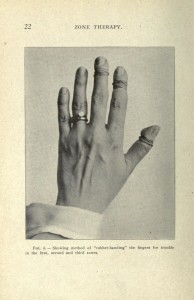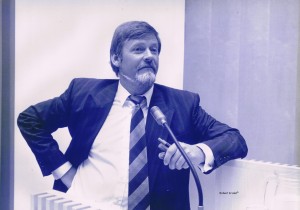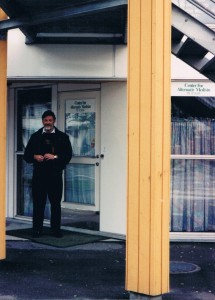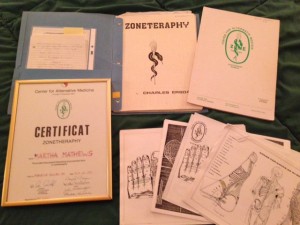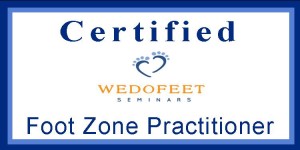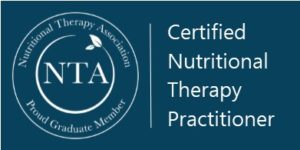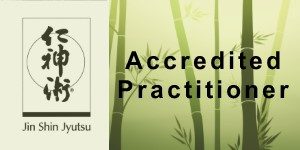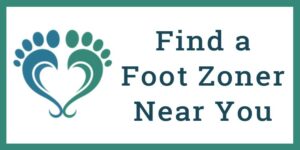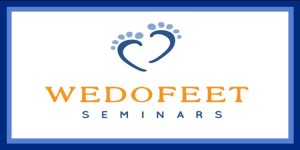© 2011 Katherine Atkinson. The contents of this article are not the public domain and may not be used without the express written permission of the author.
 In 1979, Ed and Ellen Case of Los Angeles were touring Egypt and discovered and brought back an ancient Egyptian papyrus scene depicting medical practitioners treating the hands and feet of the patients. They found six pictographs of child birth, dentistry, embalming, pharmacology, and reflexology in the tomb of Ankhmahor (the highest official after the king) at Saqqara (the physician’s tomb) near Cairo. These pictographs and papyrus scenes dated back to 2500 BC.
In 1979, Ed and Ellen Case of Los Angeles were touring Egypt and discovered and brought back an ancient Egyptian papyrus scene depicting medical practitioners treating the hands and feet of the patients. They found six pictographs of child birth, dentistry, embalming, pharmacology, and reflexology in the tomb of Ankhmahor (the highest official after the king) at Saqqara (the physician’s tomb) near Cairo. These pictographs and papyrus scenes dated back to 2500 BC.
Traditional East Asian foot reflexology is called Zoku Shin Do. The foundation of this foot portion of the Japanese massage technique goes back to ancient China and is over 5000 years old.
Foot zone therapy was used as a healing method in India and China and is documented in Inca ruins from the early 6th Dynasty, about 2330 BC. Energy work through the feet also has roots in ancient East Indian, Arabic, Grecian, Russian, and European sources. Primitive African and Native American Indian cultures have also developed their own modality of healing through the feet.
The Cherokee tribes of North America practice a form of foot zone therapy. In the 1690’s, Jim Rolls, a Cherokee Indian, said pressure therapy on the feet to restore and balance the body has been passed down through the generations. Jenny Wallace, a Cherokee Indian from the Blue Ridge Mountains of North Carolina says the clan of her father (Bear Clan) believes that feet are important. “Your feet walk upon the earth and through this your spirit is connected to the universe. Our feet are our contact with the Earth and the energies that flow through it.”
Dr. William FitzGerald
Many people and cultures deserve the credit for the development of foot zone therapy. However, the rediscovery of foot zoning in America began in the early 1900’s when Dr. William H. FitzGerald theorized that the human body was divided into ten zones, connected together by the nerves that carry the impulses. He devised the system of mapping the body into five zones on each side of a median line. These zones run the length of the body from the head to the feet. He called these zones the “ten invisible currents of energy” through the body, and demonstrated the correlation between the reflex points on the feet and areas in distant parts of the body. Dr. FitzGerald showed how a pressure of between 2 and 10 pounds on a given finger or toe could alleviate pain anywhere in the corresponding zone in the body.
Dr. FitzGerald was the senior nose and throat surgeon of St. Francis Hospital in Hartford, Connecticut. While working in Vienna, Dr. FitzGerald came in contact with Dr. H. Bressler who was investigating the possibility of treating organs with pressure points. At this time, Dr. Alfons Cornelius published his book “Pressure Points, their Origin and Significance.” When Dr. Fitzgerald returned to America, he used Zone therapy to deaden pain, replacing drugs in minor operations. He treated lumps in the breast, uterine fibroids, respiratory problems, and eye conditions. Through his studies, Dr. FitzGerald was able to map the ten zones of the body.
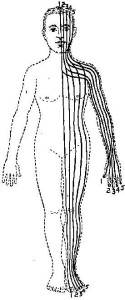 He called his work Zone Analgesia where pressure was applied to the zones corresponding to the location of the injury. He also used pressure points on the tongue, palate and the back of the pharynx wall in order to achieve the desired result of pain relief or analgesia.
He called his work Zone Analgesia where pressure was applied to the zones corresponding to the location of the injury. He also used pressure points on the tongue, palate and the back of the pharynx wall in order to achieve the desired result of pain relief or analgesia.
Dr. FitzGerald discovered a very interesting fact, that the application of pressure on the zones not only relieved pain but in the majority of cases also relieved the underlying cause as well.
Publication of Zone Analgesia Benefits
One of his students, Dr. Edwin F. Bowers, a dentist, persuaded the editor of the Associated Sunday Magazines to publish a series of articles demonstrating the technique and outlining the successes. Accompanying the introductory article was this comment by the editor, Mr. Bruce Barton.
“For almost a year Dr. Bowers has been urging me to publish this article on Dr. FitzGerald’s remarkable system of healing, known as zone therapy. Frankly, I could not believe what was claimed for zone therapy, nor did I think that we could get magazine readers to believe it.
Finally, a few months ago, I went to Hartford unannounced, and spent a day in Dr. FitzGerald’s offices. I saw patients who had been cured of goiter; I saw throat and ear troubles immediately relieved by zone therapy; I saw a nasal operation performed without any anesthetic whatever; and – in a dentist’s office – teeth extracted without any anesthetic except the analgesic influence of zone therapy.
Afterward I wrote to about fifty practicing physicians in various parts of the country who have heard of zone therapy and are using it for the relief of all kinds of cases, even to allay the pains of childbirth. Their letters are on file in my office.
This first article will be followed by a number of others in which Dr. Bowers will explain the application of zone therapy in the various common ailments. I anticipate criticism regarding these articles from two sources: first, from a small percentage of physicians; second, from people who will attempt to use zone therapy without success. We have considered this criticism in advance, and are prepared to disregard it.
If the articles serve to reduce the sufferings of people in dentists’ chairs even ten percent, if they will help in even the slightest way to relieve the common pains of every-day life, they will be amply justified.
We do not know the full explanation of zone therapy; but we do know that a great many people have been helped by it, and that nobody can possibly be harmed.”
These articles were later published (1917) in the book Zone Therapy or Relieving Pain at Home.
In Chapter II, the following technique is outlined for relieving a headache,
“The next time you have a headache, instead of attempting to paralyze the nerves of sensation with an opiate, or a coal tar “pain-deadener,” push the headache out through the top of the head. It’s surprisingly easy.
It merely requires that you press your thumb – or, better still, some smooth, broad metal surface, such as the end of a knife-handle firmly against the roof of the mouth, as nearly as possible under the battleground and hold it there for from three to five minutes by the watch. It may be necessary, if the ache is extensive, to shift the position of the thumb or metal “applicator” so as to “cover” completely the area that aches.
Headaches and neuralgias, of purely nervous origin, not due to poison from toxic absorption from the bowels, or to constipation, or alcoholism, tumors, eye-strain, or some specific organic cause, usually subside under this pressure within a few minutes.”
Dr. Joseph Riley
From 1913 to about 1920, Dr. FitzGerald was lecturing students at The Riley School of Chiropractic in Washington DC. Dr. Joseph Shelby Riley was one of Dr. FitzGerald’s students. Dr. Riley was a well known doctor of Chiropractic. He was also a teacher and administrator at The Riley School of Chiropractic previously known as the Washington School of Chiropractic before being purchased by Dr. Riley. Through his studies, Dr. Riley added zones across the hands and feet. He also developed the “hooking” technique, recorded reflex points of the ear, face, and hands, and detailed the first diagrams of reflex points found on the feet. In 1918, Dr. Joseph Riley and his wife, Dr. Elizabeth Riley, published “Zone Therapy Simplified” in which they charted the first reflex zone map of the feet. In 1942, the 12th edition of “Zone Therapy Simplified” was published.
Dr. Eunice Ingham
 In the 1930’s Eunice Ingham worked with Dr. Riley in St. Petersburg, Florida. She was a chiropractor and physiotherapist. As she mapped the reflex points on the feet, Dr. Ingham found that the “reflexes on the feet were an exact mirror image of the organs of the body.” She continued to chart the feet and developed it into a protocol she called Reflexology. In 1938, she wrote, “Zone Therapy and Gland Reflexes” and “Stories the Feet Can Tell” which documented her cases and mapped out the reflexes on the feet. After the books were published she toured America conducting workshops teaching how people can help themselves, family, and friends using her technique. In 1951, she published “Stores the Feet Have Told.”
In the 1930’s Eunice Ingham worked with Dr. Riley in St. Petersburg, Florida. She was a chiropractor and physiotherapist. As she mapped the reflex points on the feet, Dr. Ingham found that the “reflexes on the feet were an exact mirror image of the organs of the body.” She continued to chart the feet and developed it into a protocol she called Reflexology. In 1938, she wrote, “Zone Therapy and Gland Reflexes” and “Stories the Feet Can Tell” which documented her cases and mapped out the reflexes on the feet. After the books were published she toured America conducting workshops teaching how people can help themselves, family, and friends using her technique. In 1951, she published “Stores the Feet Have Told.”
Interestingly, at this same time in England, physiologist Sir Charles Sherrington was studying the spinal cord and later studied problems with spinal reflexes. He won a Nobel prize for proving that the whole nervous system and body adjusts to a stimulus then it is applied to any part of the body. He shared the Nobel Prize with Dr. Edgar Adrian a British electro physiologist, who studied the mechanism of nervous action; electrical studies of the neuron.
Dr. Charles Ersdal
Charles Ersdal was born in 1939 in Bakke, Norway, in the Flekkefjord municipality. He was the second of 7 children. His father worked in the construction industry while his mother took care of the family home and farm. Charles pursued his education while working in the field of mechanics at the Kristiansand Mechanics workshop. He advanced quickly through the ranks and his interest in mechanics led him to continue his education in the field of technical drawing. Charles opened his first mechanical company in Stockholm which grew rapidly. But as the years went by he became homesick.
Charles decided to return home and in 1963 he established his first company in Norway. The company mainly supplied services to various parts of the mechanical industry and shipbuilding industry. The firm also delivered special services in welding.
In the course of only a few years, his company grew quickly and employed many employees. Charles led the firm himself working long hours. As the result of stress and job pressures, Charles had a serious stroke which resulted in paralysis to the left side of his body.
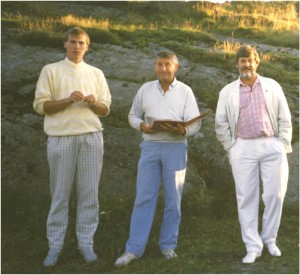
Terje Varpe (one of Ersdal’s first students in Norway), Einar Svendsen, Charles Ersdal Courtesy of Terje Varpe
It was during this period of his life that Charles came in contact with alternative therapies. He learned of the reflexology technique and allowed his friend, Einar Svendsen, a chiropractor who had been trained in the reflexology technique, to treat him. Einar treated Ersdal over a period of two years resulting in the cure of his paralysis.
This peaked Ersdal’s curiosity and and changed his thoughts on his future career. Charles began a lengthy education in Alternative Medicine at the European College of Natural Medicine in Germany. Charles studied Anatomy, Physiology, Pathology, Chiropractic, homeopathy, phytotherapy, acupuncture, ear acupuncture, and of course an in-depth study of reflexology. He was particularly interested in discovering why reflexology treatments were successful with some patients, as they had been for him, but were not successful for others.
One night as Charles was sleeping, he received the answer to his question in a dream. He was told that the body needed to be treated in its entirety and not only in reflex points. In his dream, he was shown the placement of the spine, the organs, and systems of the body as they are scaled down three dimensionally on the feet. Charles awoke and drew the map of the body as he had been shown in his dream. He continued his study of the human body and physiology and continued mapping the body on the feet.
In 1975, Dr. Ersdal held his first class teaching the Foot Zone Technique. This class was held in Norway. In the mid-1980’s he opened a clinic in Kristiansand, Norway, called the Centre for Alternativ Medisin, where he treated patients and taught his method of Foot Zone Therapy. There was a total of seven therapists at the clinic including Charles’ son, Robert Ersdal, and Robert’s wife, Helen Ersdal.
Charles continued his research, identifying and systematizing the Foot Zone Technique with great detail. He wrote extensive teaching material, including, “The Complete Treatment System”, which describes a specific and accurate processing technique.
As a result of his work, Charles was a highly sought after lecturer. In addition to teaching at his clinic in Norway, Charles also taught in Finland, Sweden, Russia, Estonia, Mexico, and Canada, and was a permanent lecturer and at the European College of Natural Medicine in Germany. It was while he was teaching at the College in Germany that Katri Nordblom first met Charles Ersdal. Katri was living in Sweden at the time but traveled to Germany during the summer, Easter, and Christmas holidays to take courses at the College.
The Foot Zone Technique is Brought to America
After moving to America in 1989, Katri discovered that people were interested in learning Ersdal’s method of Foot Zoning so she invited Ersdal to America to teach for a group of people from the community. Ersdal’s first class in America was in June 1989 in Montana. Over the course of the next three years, Ersdal traveled to America two to three times a year teaching his methods. He would hold classes over a period of about five days discussing physiology in depth before demonstrating his Foot Zone Technique. Classes were held in Montana, Wisconsin, Minnesota, Wyoming, Nevada, and Idaho at the invitation of Katri Nordblom and Christine Horvath. Christine was a student of Ersdal’s who lived in Minnesota.
When Ersdal first began coming to America to teach, although he was able to speak conversational English, he taught much of the anatomy portion of the class in Latin and would lecture in Norwegian with Katri’s husband, Hans, translating into English. As Ersdal became more proficient in English medical terms, he began teaching classes without the assistance of a translator. The first maps of the feet made available to his students were labeled in Norwegian but later maps were in labeled in English.

1st Graduating Class in America
March 1991
Back row: Marita Zachrisson, Charles Ersdal, Tonya Gomman-Swan, Bob Personnette, Jan Johanson, Sherry (last name unknown), Unknown
Middle Row: Hans Nordblom, Katri Nordblom, Robin Foline, Joshua Goman (Tonya’s son) Mary Jo Morgan, Julie Holdregger
Front row: Inbrit Stein, Bernadette Jagiello
During this time, word of Ersdal’s methods began to spread and many people did not want to wait for him to visit America so they would travel to his clinic in Norway to learn from Ersdal, two of those students included Julie Holderegger of Idaho and Martha Libster of Chicago, Illinois.
Between Ersdal’s visits to American, previous students would work with current students to ensure proper placement of the hands on a client’s foot. Those teachers included Katri Nordblom, Christine Horvath, Julie Holderegger, and a gentleman by the name of Bob Personette.
Although Ersdal’s map of the feet was very detailed, he realized that the treatment was incomplete and continued to study the body and it’s placement on the feet. Charles continued to developed treatments for the various Foot Zone signals throughout his life.
Others Begin to Teach
Katri Nordbloom recognized what she felt were limitations to Ersdal’s map of the zone and began teaching her own method of the Foot Zone Technique which she called FootZonology®. Martha Libster began teaching her own method of the Foot Zone Technique, combining her knowledge and practice of Ersdal zone therapy with that of foot reflexology and nurse-herbalism. Robert Personnette began teaching his own classes too, calling his method BEZT. Other students of Dr. Ersdal began teaching what they called European Reflexology. All of them were building upon the Foot Zone Technique that they had learned from Dr. Ersdal by adding their own touch and their own treatments to his technique.
Ersdal continued coming to America and teaching in Minnesota at the request of Christine Horvath. After Charles Ersdal’s death on March 23, 1995, Christine Horvath received permission from Ersdal’s family to continue teaching Ersdal’s method of Foot Zoning using Charles’ very detailed maps of the feet. She is the only person in America authorized to teach from his maps. Ersdal’s son, Robert, continues to run the clinic that Charles started in Norway.
The Legacy Continues
Like a cook who is given a recipe and makes adjustments to suit their tastes, students of Ersdal’s took what they learned from him and began adjusting and adding to his method, creating maps of the feet and zone techniques that reflected their understanding and education. Some opened schools, like Katri Nordblom and Martha Libster, others taught workshops independently to friends and neighbors who wanted to learn.
At this time, there are classes, seminars, and workshops held throughout America teaching the Foot Zone Technique. In addition to Katri’s school in Montana, the Nordblom American Institute of FootZonology, you can learn the foot zone technique from schools such as We Do Feet with locations throughout Utah, Idaho, and Nevada, or the Academy of Foot Zone Therapy which holds classes in Utah, Arizona, Washington, and Nevada. Christine Horvath continues to teach the foot zone technique, using Ersdal’s maps of the feet, in Minnesota. Martha Libster includes information on the foot zone technique in her Integrative Nursing program at Golden Apple Healing Arts in the Chicago suburb of Wheaton, Illinois.
Note: This article was originally published on MindBodyandSoleOnline.com, September 2011.
Updated: February 2015
Updated March 2016

